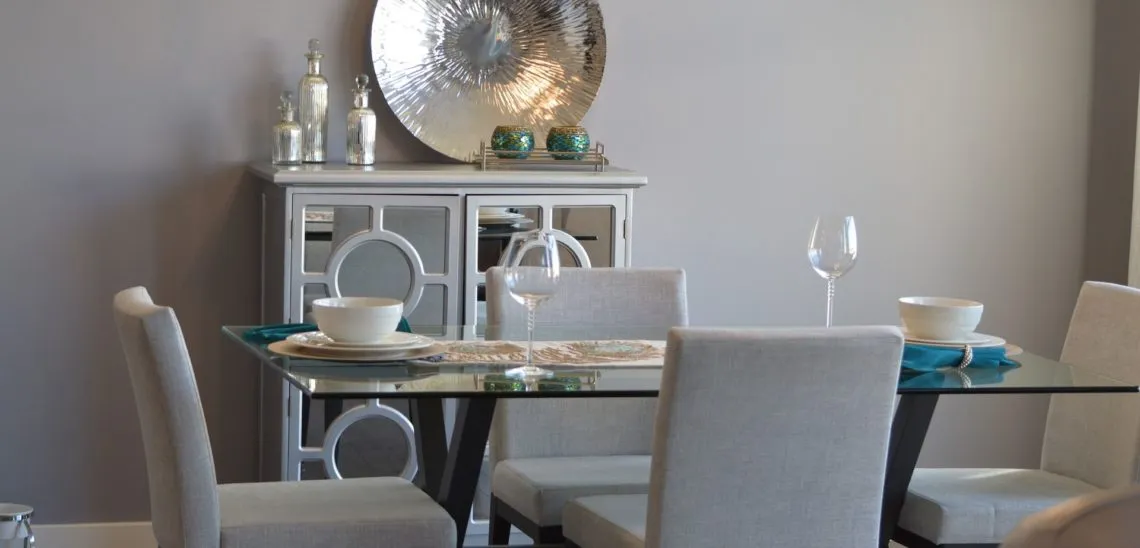You just sold your big house and bought a bigger one in Chicago area. Yay! Moving to a bigger, more beautiful home is so exciting. On the other hand, there is so much space full of items to pack, one room at a time – that’s when the excitement wears off.
If this is your first time to relocate all your life, belongings, so many memories into boxes and transfer them to a brand new place, it might be a demanding task. If you decide to pack on your own, our advice is to be patient and to section off areas of your house for packing. Give yourself enough time to pack before the moving day.
One of the rooms where you have to be careful while packing is, for sure, your dining room. It is the place where you and your family gather round to eat on the daily, but where you also have your big family gatherings and holiday meals. Now let’s put all that in boxes! Don’t know where to start when packing your big dining room? With our useful piece of advice, you’ll be able to pack that room easily and smoothly, no stress!
#1 – Get Packing Supplies
To be able to pack and protect all your items the right way, you’ll need packing supplies. Since there are many China in the dining room to pack as well, you’ll need many sturdy boxes. Also, you’ll need packing paper, paper pads, bubble wrap, tape, as well as the markers to label the boxes. If you’re not sure where and how to get all these packing supplies, check STI Moving and Storage offer – you can get packing kits from us as well.
When choosing boxes, opt for double-walled boxes for extra durability. Specialty boxes, such as dish packs with dividers, can also make packing fragile items like plates and glasses safer and more efficient. Don’t forget to have enough packing tape to secure the bottoms and tops of all your boxes, ensuring they won’t collapse under the weight of your belongings. Organizing your supplies beforehand saves you time and reduces stress during the packing process.
#2 – Pack China
If you’ve got all that fancy China in the dining room cabinet, make sure to be extra careful while packing it. Before placing the plates in the box, pad the inside of the box with crushed paper. All the dishes in the box also need extra padding in between. Make sure that the heaviest items always go to the bottom, so you make sure nothing breaks during the transport.
Wrap each plate individually in packing paper or bubble wrap for added protection. Place the plates vertically in the box like you would with records, as this reduces the risk of breakage compared to stacking them flat. Use foam or paper dividers between layers for additional cushioning. After filling the box, gently shake it to check for movement; if you hear or feel items shifting, add more padding to fill any gaps.
#3 – Pack Silverware and Stemware
To protect your silverware, you can pack them in sets or individually, depending on the level of protection you want for it. If it comes in a chest, you can put the wrapped items back into it and then close the chest and pad it as well. As for the stemware, use the packing paper to wrap around the stem, and then use another for the rest of the glass. This is how each piece should be wrapped to protect it.
For added safety, pack stemware in boxes designed specifically for glasses, often called cell boxes. These come with individual compartments to prevent contact between glasses. Label the box as “Fragile” and mark it with “This Side Up” to ensure careful handling during the move. With silverware, consider tying sets together with rubber bands or string to keep them organized and secure during packing.
#4 – Pack the Fragiles
Any fragile item, like the vases, etc., should be protected with the bubble wrap and padded with the paper outside for extra care. Being systematic and well organized always works – same goes for packing and moving. When you have a plan, it all goes much smoother and faster. When you’re done with the dining room, you can continue with another room. Happy packing!
Take the time to assess the fragility of each item and wrap it accordingly. For particularly delicate or valuable pieces, consider adding an extra layer of padding, such as foam sheets or corner protectors. Place these items in smaller boxes to reduce movement, and then pack those smaller boxes into larger ones, filling any gaps with crumpled paper or packing peanuts. This double-boxing method provides extra security for irreplaceable or sentimental items.
Bonus Tips for Packing Your Dining Room
- Label Every Box Clearly: Mark each box with its contents and the room it belongs to, such as “Dining Room – China.” This makes unpacking easier and ensures boxes are placed in the correct room upon arrival.
- Use Color-Coded Labels: Assign a specific color to your dining room boxes, making them easily identifiable at a glance during the move.
- Keep Track of Box Weight: Avoid overpacking boxes to prevent them from becoming too heavy to lift safely. Use smaller boxes for heavy items like plates and larger ones for lightweight items like table linens.
Conclusion
Packing your dining room may feel overwhelming at first, but with the right supplies, a systematic approach, and plenty of patience, you can pack everything securely and efficiently. By prioritizing the protection of fragile items like China, stemware, and vases, and ensuring all boxes are labeled and organized, your dining room’s transition to your new home will be seamless. Whether you’re moving locally or long-distance, taking the time to pack carefully will save you stress and ensure that your cherished items arrive safely. Happy packing and best of luck in your beautiful new home!



